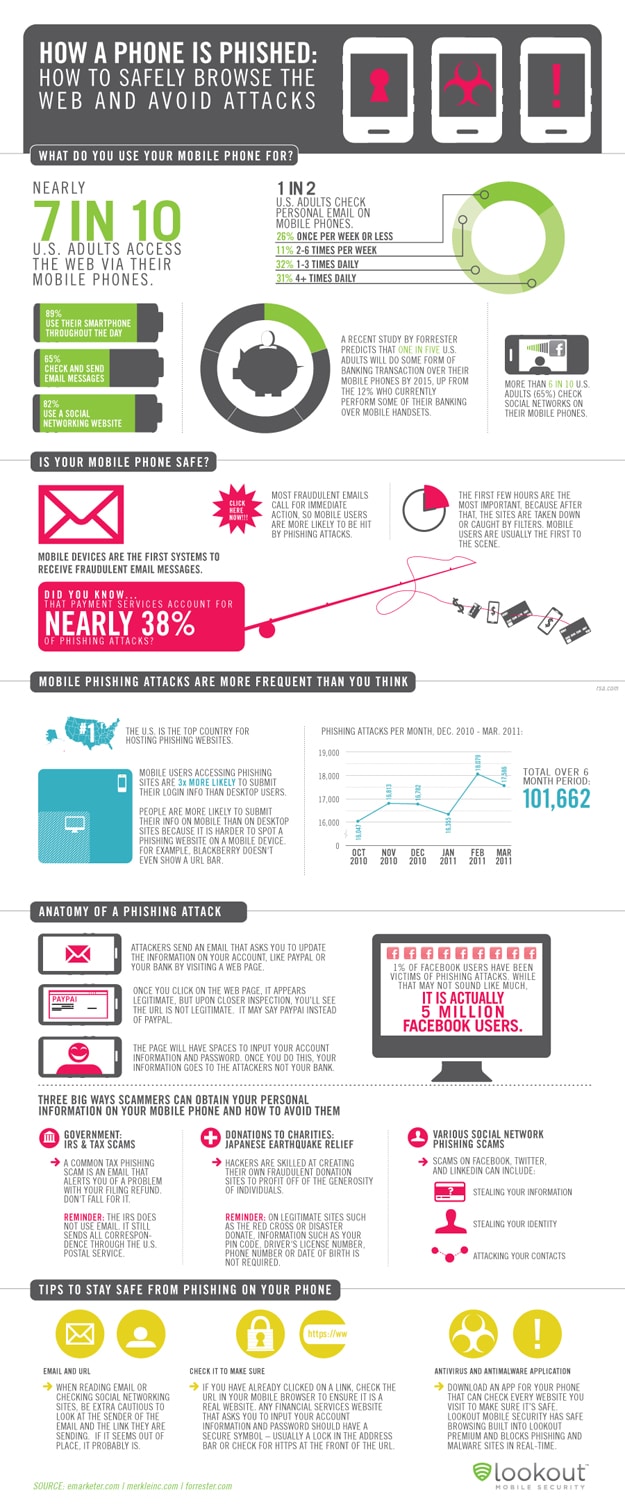There have been a lot of reports published lately about our security as it relates to our mobile devices. In this article, we are going to specifically talk about phishing. Phishing is the technique used to convince us to enter our personal information (usernames, passwords, credit card numbers, bank account information, etc…) into a website that we think is trustworthy and safe.
I know what you are probably thinking, “Duh… everyone knows not to enter that kind of information into a website.” Hopefully most people do, but here’s where it gets tricky. Most of us know not to fall for that stuff on our desktop computer; however, there is a whole different psychology when it comes to our smartphones. We tend to trust the information that comes in on our phones much more. In addition to this, because of the small screen, scammy emails aren’t as easily identified on our smartphone as they are on our desktop computer. You can read more about this in the Wall Street Journal article entitled Smartphone Users More Likely to Fall for Email Scams.
Apparently iPhone users are eight times more likely to fall for a phishing scam than Blackberry users. Again, that has to do with how the information is displayed on the screen. The cyberscammers are well aware of this, and they do a surprisingly good job at filling that visible area with real-looking data. According to A New Internet Creed: Think Before You Click, the best rule of thumb is to not click on any links in any emails that are delivered via smartphone. The first step to avoiding becoming a victim is to understand how the process works. In this new infographic by Lookout Mobile Security, you can see exactly how a phone is phished and how to safely browse the Internet and avoid attacks. I learned a lot from reading this!
Click Here For Enlarged Version
Header Image Credit: [Deceptology]

COMMENTS